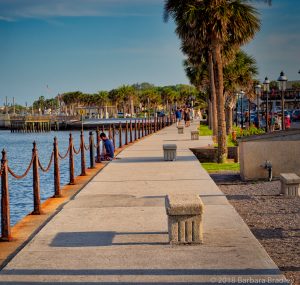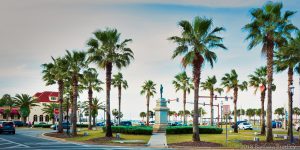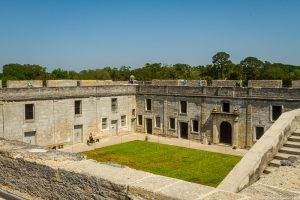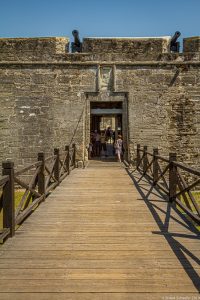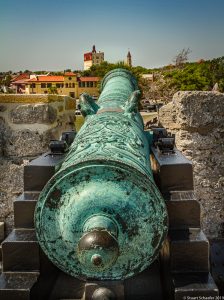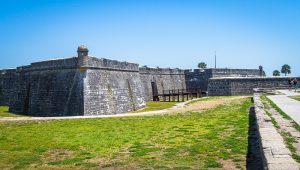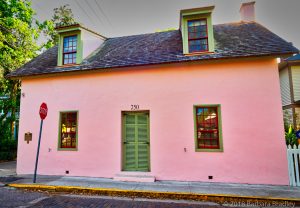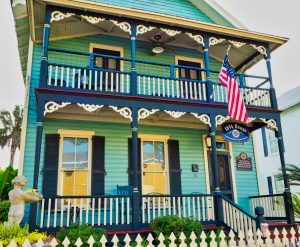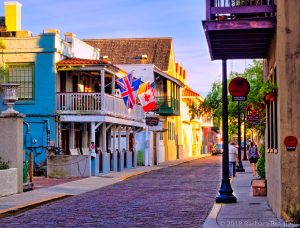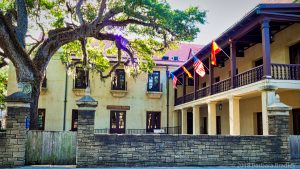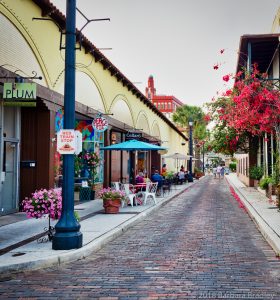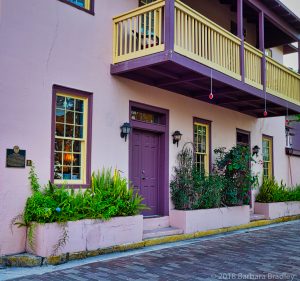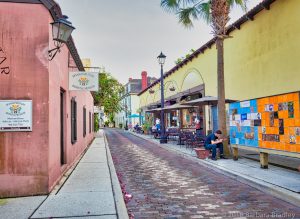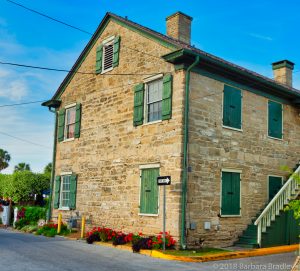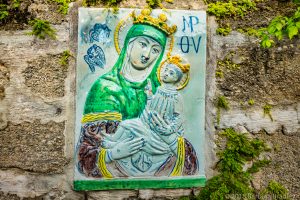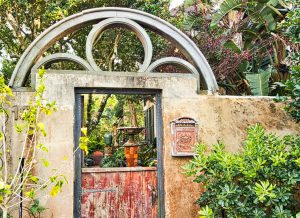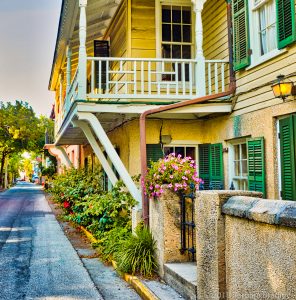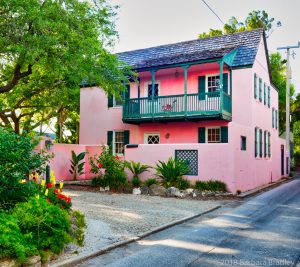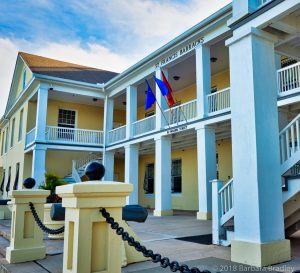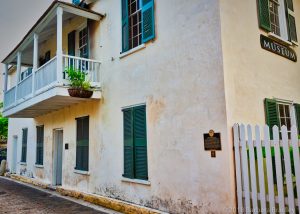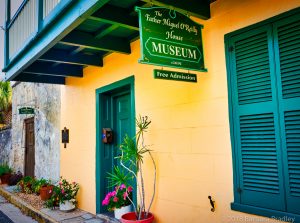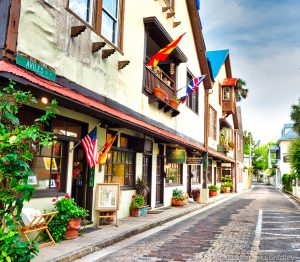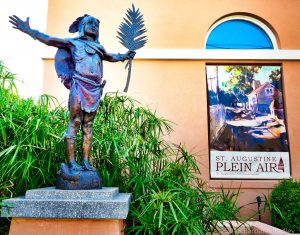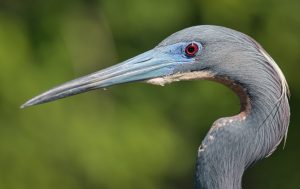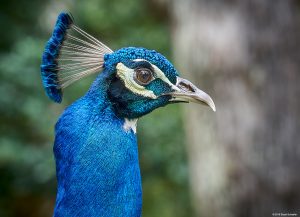Stu and I attended the 2019 Florida Birding and Photo Fest in St. Augustine, Florida and were totally captivated by the birds, the city, the food and the residents of America’s oldest city!
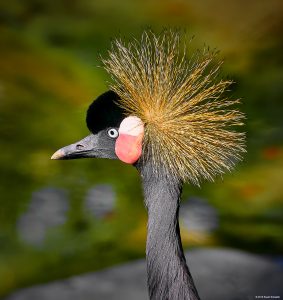
The charms of historic St. Augustine, Florida will keep you enthralled, no matter what your interests! St. Augustine is America’s oldest city and has 400 years of history and culture to enjoy! This city dates from 1563!
Of course, we had heard of Juan Ponce de Leon, Sir Francis Drake, Henry Flagler and the Timucua Indians. What we didn’t know is that all are a part of the history of the coastline between St. Augustine and nearby Jacksonville.
When you visit St. Augustine, don’t expect a sleepy little historic district. St. Augustine is lively with residents and visitors relishing the gourmet restaurants, outdoor cafes, galleries, historic homes, gift shops, pedestrian streets, seawall walkways and upscale shops. Every evening, along the seawall, you’ll find dog walkers, “bench sitters,” joggers, photographers and couples. There is even a mini golf course along the seawall! A Spanish galleon sits in the bay, setting imaginations on fire.
|
|
|
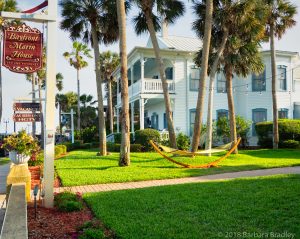
Dominating the waterfront is Castillo de San Marcos, the oldest and largest masonry fort in the continental U.S. dating from the 17th century. America practically began there. Some 300 years of colonial wars took place beginning in the 1500s and St. Augustine was not immune.
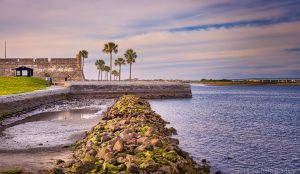
Construction of the fort began in 1672, which was 107 years after the city was founded! The fort changed hands six times, with four different countries claiming ownership:
- Spain (1695-1763) and (1783-1821)
- Kingdom of Great Britain (1763-1783)
- Confederate States of America (1861-1865)
- The United States of America (1821-1861) and 1865 to present.
|
|
|
|
|
|
WALK THE COBBLESTONE STREETS!
Walking the intersecting narrow streets and alleys of St. Augustine was our favorite pastime. Never physically lost, we became lost in time! St. Augustine is the oldest continuously occupied European-founded city in America. The entire historic district is filled with architectural gems from the Spanish colonial period and each historic period thereafter.
The entire historic district and downtown area can be easily walked so park your car (free after 5 p.m.-check the Parking Lot at the Castillo de San Marcos first) and stroll the streets!
The Bridge of Lions (dating from 1925) is considered by some to be the most beautiful bridge in the South and spans the Matanzas Bay. Sit on one of the many benches and watch the sailboats glide by. Stay for sunset and you will see the lights which line the bridge welcome evening with their soft glow. A pair of lions guard the entrance to the bridge and are copies of the Medici lions found in Florence, Italy.
The lions were commissioned in 1925 (completed in 1927) and were sculpted by Italian sculptor, F. Romanelli.
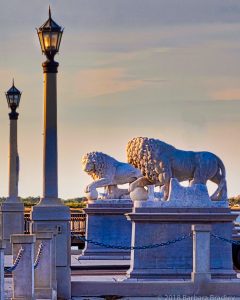
The positioning of the oldest buildings in St. Augustine was influenced by a royal decree of 1573. The decree required the placement of buildings and walls along the street edge for defensive purposes. Take a look at some of the historic architecture in historic St. Augustine:
|
|
|
|
|
|
|
|
|
|
|
|
|
|
|
|
|
|
A FEW OF THE MUSEUMS & HISTORIC STRUCTURES
|
|
|
|
|
|
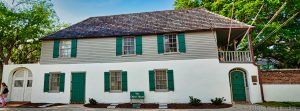
THE ARTS & FOOD
Our first evening, we dined on an outdoor patio under sparkling outdoor bulbs while listening to a bubbling fountain. We watched the adventures of a tiny lizard in the patio plantings at Catch 27. It was magical. Munching on gourmet fish and shrimp tacos, we listened to the live music from other restaurants waft into the evening air. Music is a large part of St. Augustine’s vibe. The food is so outstanding everywhere that we recommend getting to restaurants and cafes either early or after 8 p.m.-they fill quickly.
|
|
|
Be certain to visit the fabulous Lightner Museum, which was showing Degas paintings while we were in town. Take in the First Friday Art Walks that take place from 5-9 p.m. beginning in the Plaza de la Constitucion or visit the local community theatre.
We were entertained by seeing one of St. Augustine’s horse-drawn carriages clop-clop down a cobblestone street and stop in front of an art gallery. The gallery owner came to the sidewalk with oats bucket in hand and fed the horse. Turns out, this is a regular stop for the horse! The carriage driver told me the horse gets upset when they drive by and the owner isn’t there!
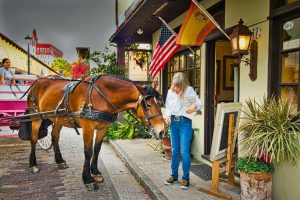
NATURE
If you are a birder, you need to get yourself to St. Augustine! Don’t miss the Alligator Farm Zoological Park in St. Augustine, Florida. Your grandchildren will love it and so will you! Whether at the Alligator Farm or exploring a local marsh, you’ll find the diversity of birds thrilling. Take a look at just a couple of the beautiful birds in and around St. Augustine.
|
|
|
VISIT THE FOUNTAIN OF YOUTH!
Smaltzy? We didn’t care. We did it! The grounds hold more than the “fountain” and we learned a lot about local Native Americans. The views were great!
|
|
|
| https://youtu.be/SBAdFpcEOv0
|
|
| https://youtu.be/cDTwaDfE_lg
|
|
|
|
You see? St. Augustine is for everyone!!
St. Augustine, after just one visit, became one of our favorite cities. We cannot wait to go back! If you have not been yet, you are missing one of America’s greatest gems!
*The St. Augustine Record. Written by Peter.Willott@StAugustine.com Posted July 12, 2015,
